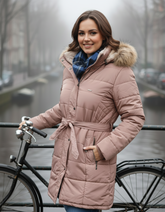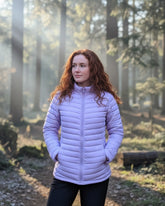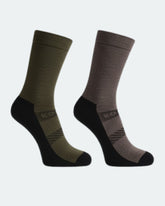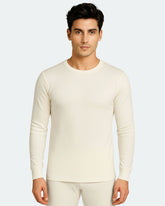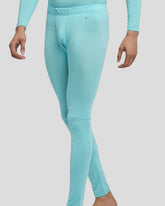“Switzerland: Snow, Skis & Sensational Slopes” – Tejaswi
Meet Tejaswi Gupte, a communications professional who is an explorer with a wanderlust. She did something she wouldn’t usually do when travelling- followed a routine! Read on to see why she made an exception this time.
Shraddha: So Tejaswi, how often do you travel?
Tejaswi: I try and take trips as often as I can but I make sure to take at least one trip every year. I’ve been travelling for a while. I took my first trip, to Europe, back in 1999. I went backpacking with a friend for a month on a complete shoestring budget. We had no bookings, no itinerary, no mobile and the internet was not as accessible as it is today. At the time, when we met locals in the trains, we’d get asked questions like “you must be rich to afford a trip to Europe” and the like. That was primarily because they weren’t used to seeing Indians and especially girls travel but that has obviously changed now, we spend a lot on vacations and travelling.
Vini: What kind of a traveller would you describe yourself as?
Tejaswi: I’m more of an explorer. My idea of seeing a place is to be able to tell you the little things that the locals do over there. Occasionally, I like doing new things like this ski trip. It was my first time skiing and it was a complete ski holiday. I wouldn’t even call it a holiday- we used to wake up at 6 am every day. Otherwise, as an explorer, I like to see new places. I absolutely dislike hurrying myself to see something. Slow travel is the way to go, like when I went to Spain last year; we went for around 20 days and went to some four places- this gave us enough time to explore each place.
V: Was this ski trip a solo trip?
T: No, it was actually a mixed group of family and friends. My cousin brother owns an apartment in Churwalden. It is a small town, near Davos, of some 2000 people and a great place to ski!
I hadn’t even met a couple of people from the group before but the one thing common between us was that we wanted to ski. While my brother is an expert skier, it was the first time for some of us.

V: Have you tried any other adventure sport before this?
T: I did scuba diving in Mexico; parasailing; and have done river rafting in Rishikesh and Sikkim. I know horse riding and in fact, learnt it for almost four-five years while I was in school.
V: Since how long were you planning a ski trip?
T: I wasn’t planning on one. I usually don’t say no to anything concerning travel. So one day while my cousin and I were talking he suggested that I try my hand at skiing since I’d never tried it before. So basically the idea of the trip originated from just a conversation.
As for the planning (laughs), my brother is great at it. He told us about what to carry in terms of clothes especially, because we’re from a tropical climate and going to such a place in winter needs some preparation. He stressed on carrying my Nike dry-fits. You tend to feel hot when you ski, so you sweat even though the temperature outside may be nearing 0°C and then you feel cold. The dry-fits, as the name suggests, keeps you dry in the snow.
We hired the ski gear from there. Apart from this, there was no great planning as such, just a month or so before the trip, we planned our travel.

V: Tell us about your learning experience?
T: There’s a saying by Confucius, “Our greatest glory is not in never falling, but in rising every time we fall” which holds extremely true for skiing (laughs). For the first two days, I only kept falling because it took me time to get used to the snow, the weight of the gear and balancing it all.
You also need to have an open mind- as we get older, we’re afraid to fall- I had to get over that fear. Initially, I was afraid and embarrassed to fall, in fact, I’d tell my brother that I wished I had learned to fall more gracefully as a child (laughs).
The first thing they teach you is balancing but the most important thing is to learn how to stop. When you’re coming down a slope if you don’t know how to stop you will either fall or just crash into something.
There are different slopes – beginners, intermediate and advanced. Around the fourth day, I could comfortably ski on the beginner’s slope. On the last day, we went to a higher slope. The first time I came down that slope, I fell. The second time, I managed to manoeuvre the curves.
Another challenge is to get on or off the ski lift. It is constantly moving so if you cannot maintain your balance and get on and off it, you will get in the way of the others. It took me two days to figure that out! I think if I’d stayed longer, I could’ve gone to a slightly higher slope.
V: Was there a course that you registered for?
T: Yes. There is a ski school with certified instructors. They have weekly sessions. They start on a Saturday and go on till the next Saturday. We got graded at the end of our session!
Our session with the instructor would begin at 9 am. We’d get into our gear and reach the slope at around 8 am to practise. Getting into the gear took a lot of time mainly because it was layered and heavy- the boots themselves were around 3kgs – or at least they felt like it. We had to carry our own skis to the beginning of the slope. Luckily the apartment was close by and it was a comparatively short walk but to walk in the snow with the gear and skis is a challenge. The day we reached, Churwalden received the highest snowfall of the season, so you can imagine the snow.
The instructor would spend around an hour and a half with each of us and then we’d keep practising through the day. She taught us all the days that we were there.
V: Why did you choose skiing?
T: It just happened. Honestly, it is better to learn skiing at a place like Switzerland that is known for its slopes. It has better facilities. They give a lot of importance to teaching and safety. The instructors have grown up skiing. I saw four and five-year-old kids comfortably zipping past me. The parents would carry their really young kids on their back while they were skiing. So the kids get used to the movement on the slopes at a very young age.
V: Did you have any previous encounter with snow before?
T: I’ve been in the snow before but this was my first encounter with so much of it! This was winter and the temp was almost -4°C. Usually, my threshold for cold is very low however I realised that if you layer yourself well you’re fine in the cold weather.
V: Any training or preparation before the trip?
T: No, not really.
S: You mentioned running as a routine?
T: I actually run every day to keep myself fit. I don’t think I’ve reached that stage where I can run a marathon because if I ever do reach that stage I’d rather run the whole distance than run and walk at my leisure.
V: What did you do after a whole day of skiing?
T: Ah we’d hit the bars (laughs). Churwalden is a small place. Our instructor told us that the whole town knew that a group of five Indians had come to learn skiing (Laughs). They’re a really good bunch of people. Since it’s a small place, everyone knew everyone and when we’d go to the bar everyone would get talking to each other. We went to this bar called ‘Im Stall’, owned by a couple. They were into theatre but they ran this place during the ski season. In their restaurant they had this really long wooden beam running high across the ceiling. The lady was challenging anyone to traverse that beam. Some gave it a shot and two of them managed to do it. It was really good to see such camaraderie and enthusiasm. I hope we can see more of these things in cities like Mumbai. So yes, I’d say the people were very warm, friendly and a very enthusiastic bunch, for sure.
If we didn’t go anywhere, we’d cook at home.
S: What did you carry from here?
T: We hired the gear from there such as ski boots, skis, poles etc. From here we carried the dry fits.
In terms of food, we either ate out or made whatever was available at the supermarket there. The non-vegetarian food available there was great. The Wurst (lovely thick juicy sausages) was excellent, then there was Rösti (a potato dish). When we cooked at home, we took turns cooking. I made chicken stir fry once. One of our friends in the group loves cooking so he cooked up some delicious concoctions. Breakfast was light – tea, coffee, cereal, a fruit maybe.
V: Did you ever feel nauseated or giddy?
T: No, not really. But what I do remember is that I didn’t drink enough liquids and we’d have iced tea to rehydrate ourselves. No matter the low temperatures outside, the skiing made us feel so hot that the chilled iced tea was a welcome thirst quencher.
Also, when I came down the slope for the first time I experienced this feeling of being free. That was my first solo time down the slope without falling. The speed and the winter breeze hitting my face was unforgettable. For me, that experience is what made me take that ski lift and go back up!
Falling while skiing isn’t that bad because you fall on the snow and you also have all the layers of clothing and ski gear. However, you need to take care of the skis because they are razor sharp on the edges (this helps in stopping and turning). Another reason people don’t like to fall is that it is very difficult to get up again. There is a particular position you’d have to take to get up. I could never get up on my own- the instructor (who was strong for her age) would help me up.
S: Did old people ski?
T: They did actually! They carried their own skis on their shoulders. There were school excursions too to the slope. Beyond the beginners’ slope, there were higher slopes that you could reach using the chairlift. These higher slopes had lovely restaurants. They also had the “toboggan.” Churlwalden has got the longest toboggan run, around 3.5 km. This was sadly shut when we went.
V: Do you plan on going back and learning to ski further?
T: (hesitates) Maybe. The thing is I don’t know if I want to go to an advanced level of skiing. Maybe next time I will go in the summer so I don’t have to wake up at 6 am! (laughs)
V: Any tips or suggestions for first-time skiers or people aspiring to learn skiing?

T: 1. Dress up - The internal layer should ideally be a dry fit fabric. Even though it may be sub-zero temperature outside after some time you will be sweating inside. The dry-fit helps absorb it so that you don't get cold. Ski socks, ski jacket, Waterproof Ski Pant for Women, ski goggles (for snow blindness) ski mask, helmet and Waterproof Gloves for Women are essential.

2. Ski shoes - Most important that you get the right size. They are heavy and one of the most important things in your gear besides the skis.
3. Get used to it - We are not used to handling so much gear on us. So a day before you begin skiing get used to it by walking around outside wearing the gear.
4. Keep yourself hydrated - Keep yourself hydrated through the day. Water is good. Iced tea is great!
5. Sun-screen - To avoid having multi-coloured skin at the end of your ski week, be generous in applying sunscreen
6. Practice - You may not be with an instructor all the time. You need to practise by yourself like learning any other skill.
7. Know how to stop - It is probably one of the most important lessons in skiing. Try and learn it as soon as you can. Once you know how to stop, skiing is much less daunting and more enjoyable.
8. Learn to fall & get back up - All beginners fall while they are learning. Some more than others. The snow is a great cushion so you won’t really get hurt. The challenge is getting yourself up with all that gear on you.
S: Tell us more about the highest slope you mentioned?
T: Lenserheide is the highest range, about 2300 m (7500 ft). There is a restaurant right at the top with a birds’ eye view of the range.
The Alpine tournaments take place there. It’s called the “Super G.” It’s called Speed Skiing. The instructors are called on as volunteers for the tournament. They have to throw water all over the trail. The reason they throw water is that the contestants need speed when they come down, unlike people like us, these contestants need the snow to be hard so that they can pick up the speed! They take just over a minute to come down the slope so imagine the kind of speed they come down with. Sadly, we just missed the tournament. We left in the morning and the tournament was in the afternoon. I would love to go back to watch that tournament.
V: How were the weekends back there?
T: Laidback! The thing is, you’ll see a lot of retirees and most people in Switzerland are well off.
We used to go almost every day to this restaurant for lunch (usually a sandwich and iced tea) and this table was almost always occupied by a group of senior people sipping chilled beer and wine…
V: How would you describe the locals?
T: Extremely friendly and talkative. Couple of times our instructor also came home after the day for dinner. But honestly, I feel that wherever you travel, it depends primarily on how friendly you are. If you are open and talk to the people there, you will know more about the local culture.
S: Was language a barrier?
T: Not at all. Most people spoke English. Depending on which side one is, the locals also speak German or French. We were on the German side.
V: Anything life-changing?
T: This trip wasn’t on my bucket list but I’m glad that it happened. Hadn’t ever thought I would learn skiing. I won’t be able to forget the feeling I had when I came down the slope for the first time. It’s basically that feeling you get when you learn to do something by yourself the first time- you can’t ever forget it!
V: So where do you plan to go next?
T: I want to go to the mountains in India. I also want to do the Everest Base Camp but I’m not sure if I’ll be able to do it (laughs). I also want to go road tripping in Ladakh. Basically more of India- there is so much in India itself to see. I also want to do a road trip across villages in Italy & France.
V: Anything that you’d want to bring back from there?
T: Not just Switzerland, from Europe actually – their attitude towards life. We need to learn how to enjoy life more, like taking breaks in the Swiss Alps with a warm cup of coffee and a good book from my favorite Kosha Journal. We don’t do that often, we’re stuck at work and our daily routine takes over until we are 50 or 55. We retire and then say we’ll enjoy and travel. If you think about it, there are some life experiences, some things that you may not be able to do as time passes you by. Maybe your health may not allow you to do it by then. I believe to do it when you should and not when it’s convenient."
Also, we need to be fit!
S: On a closing note, one thing you’d recommend people to have there?
T: If you’re a non-vegetarian definitely try the Wurst. If you’re a vegetarian, try the Rösti. And everyone should have chocolate!
Editor’s Picks
Alaskan Parka Jacket For Women - Slim Fit
- ₹8,925.00
₹11,900.00- ₹8,925.00
- Unit price
- / per
Lightweight Packable Puffer Jacket For Women
- ₹5,040.00
₹8,400.00- ₹5,040.00
- Unit price
- / per
Alaskan Parka Plus Size Jacket For Women
- From ₹10,125.00
₹13,500.00- From ₹10,125.00
- Unit price
- / per
Woolmark Full Sleeves High Neck Thermal Top For Women
- From ₹1,845.00
₹1,845.00- From ₹1,845.00
- Unit price
- / per
Men's Pack Of 2 Merino Wool Cushioned Technical Socks
- ₹2,148.00
₹3,580.00- ₹2,148.00
- Unit price
- / per
